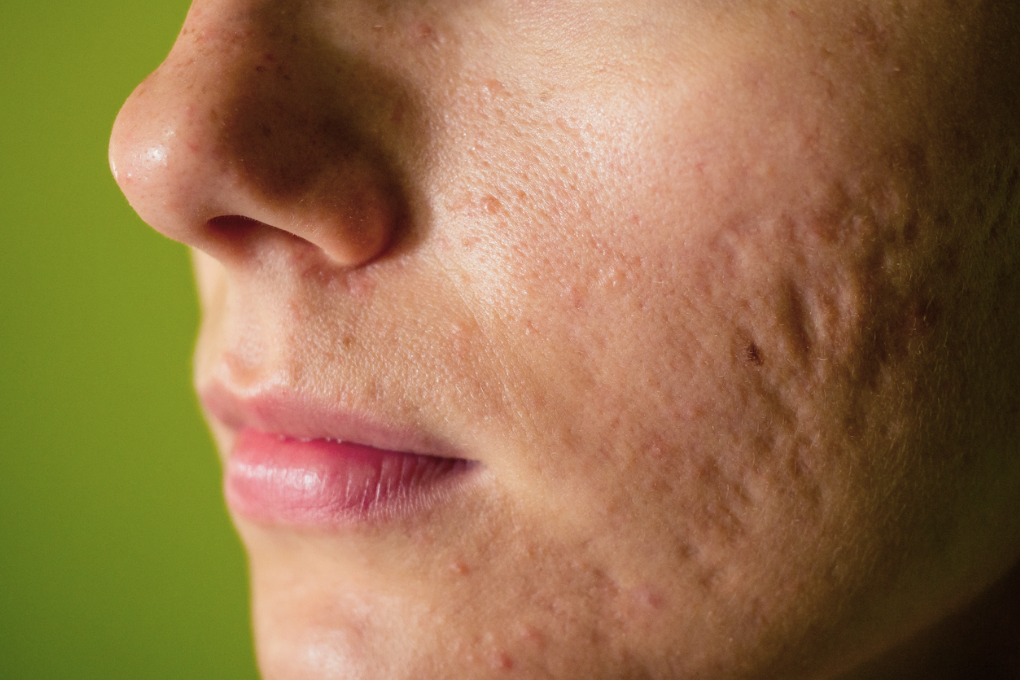Atrophic scars occur when the skin heals below its normal level, creating sunken or indented areas. This type of scarring is often the result of severe acne, chickenpox, or injury, and the severity can vary based on the depth and size of the scar. Common forms of atrophic scars include icepick, boxcar, and rolling scars, all of which can make the skin's surface uneven and affect self-esteem. Treatment for atrophic scars typically involves a combination of laser therapy, microneedling, and other skin resurfacing techniques to restore a smoother and more uniform skin texture.
Atrophic scars develop when the skin is unable to produce enough collagen during the wound healing process, resulting in sunken or depressed scars. They are most commonly seen after severe acne, chickenpox, or trauma. The three main types of atrophic scars are:
- Icepick scars, which are narrow and deep
- Boxcar scars, which are wider with sharp edges, and
- Rolling scars, which are more shallow and smooth.
Treatment focuses on restoring collagen production and resurfacing the skin to minimize the appearance of these scars.

(Available on Excel V and Excel V Plus)
Best for
Mild cases or isolated vessels.
How It Works
The long-pulse Nd:YAG laser emits energy at a wavelength absorbed by haemoglobin in blood vessels. This heat causes the targeted vessels to collapse, effectively treating both surface red veins and deeper blue veins.
Results
Treated vessels may disappear immediately or gradually fade over several weeks.
(Candela VBeam Perfecta, Excel V, Excel V Plus, Sciton BBL)
Best for
More severe cases or large areas of visible facial veins and redness, particularly in rosacea.
How It Works
This approach layers multiple vascular-targeting technologies in one session, including:
Results
Effectively reduces visible veins, diffuse redness, and facial flushing commonly seen in rosacea.
(Candela VBeam Perfecta, Excel V, Excel V Plus, Sciton BBL)
Best for
Stimulating collagen and vascular remodelling to reduce persistent skin redness.
How It Works
Often recommended in combination with vascular laser or BBL treatments to enhance skin healing, texture, and redness reduction.

Laser treatments are highly effective, with many patients seeing significant improvements in the texture and appearance of their scars. The results depend on the scar type, laser used, and number of sessions.

The selection of laser treatment is based on factors such as skin type, severity of the lesion, and the patient’s available downtime for recovery.

Most patients need 3–6 sessions spaced several weeks apart for optimal results. Your dermatologist will create a customised treatment plan based on your specific needs.

Recovery time varies by laser type. Non-ablative lasers usually have minimal downtime (1–3 days of redness or swelling), while ablative lasers may require up to a week or more for healing.

Side effects are typically mild and include redness, swelling, and temporary discoloration. Rarely, pigmentation changes or scarring can occur, but these risks are minimized with proper care.